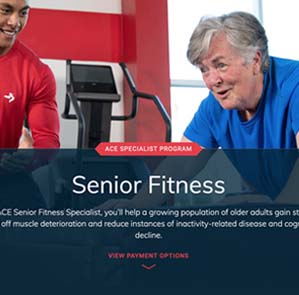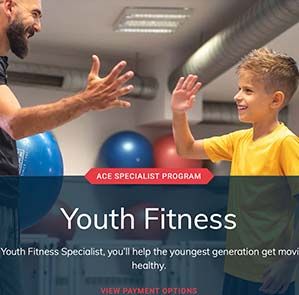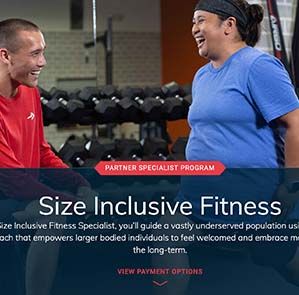
The fitness and health coaching industries are constantly evolving—and that evolution was only accelerated by the events of the past few years. While the struggles and stressors of the pandemic have been all too real, many professionals have thrived despite the chaos by quickly recognizing that they’d need to serve their clients and class participants in new and innovative ways if they were to continue to succeed.
That importance of that skill, to be able to foresee future opportunities and then position yourself to take advantage of them, is impossible to overstate, whether you are a small business owner, an industry veteran or just getting started.
Here, we’ve asked five industry experts to answer questions about where they think things are headed and offer tips on how to stay ahead of the curve—to leverage what is to come, rather than being overwhelmed and left unready to respond.
Learn to Harness the Power of Technology
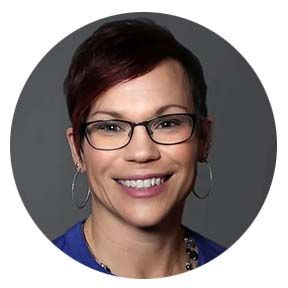 Lauren Shroyer, MS, ATC, is the ACE Vice President of Product and Innovation. In that role, she leads the development of ACE’s products and manages strategic education collaborations on behalf of ACE. From conceptualization to execution, Shroyer guides a team of experts in designing and overseeing ACE products and programs both live and online. Additionally, Shroyer ensures that all of ACE’s products align with the highest professional credentialing and continuing education standards and practices available in the field.
Lauren Shroyer, MS, ATC, is the ACE Vice President of Product and Innovation. In that role, she leads the development of ACE’s products and manages strategic education collaborations on behalf of ACE. From conceptualization to execution, Shroyer guides a team of experts in designing and overseeing ACE products and programs both live and online. Additionally, Shroyer ensures that all of ACE’s products align with the highest professional credentialing and continuing education standards and practices available in the field.
How would you describe the direction of the fitness industry in terms of offering new services, reaching new audiences and expanding its reach? How can ACE Pros prepare to be at the forefront of these changes? Can you offer two or three practical steps that they can take right now?
This fitness industry is always changing. Today, I’m seeing a cool combination of throwback and next century. Step aerobics is making a comeback and kickboxing is also seeing a resurgence. At the same time, technology-fueled services like online fitness programs, health coaching and high-tech recovery are extremely popular. The ebbs and flows of industry trends are fueled by consumer interest, which makes it important that ACE Pros stay on top of these new trends. To continue to thrive in this industry, I recommend the following:
- Learn about new trends and understand how and when they are appropriate. Avoid making judgements that a particular trend is “good” or “bad.” Instead, learn to discuss their application with inquiring clients and, when appropriate, integrate them into your services. You won’t become an expert on every new trend but ignoring them poses the risk that your knowledge will stagnate, and you may lose the interest of your loyal clientele.
- Follow trusted industry news. Sources like ACE Compass, CERTIFIED™ and the ACE Insights and Healthy Living blogs will help you stay abreast of new trends in fitness programming and services and better understand their applications.
- Identify your niche. Sorting through the ever-changing trends is a lot easier when you know your personal interests and the niche services you want to offer your clientele. ACE Compass has a great Challenge that leads a pro through some self-discovery. In short, it can help you identify who your ideal client is and which type of services you broadly want to offer. Also, identify a mission. For instance, a mission to reach more people may mean that your ability to connect with each individual person is more limited. On the other hand, a mission to deeply impact each individual client may mean that you forgo a mass audience and therefore mass-audience trends. When you identify who you are as a professional, it is a lot easier to also identify when a new trend just isn’t for you.
You play a key role in ACE’s equity, diversity and inclusion (EDI) initiatives. How do you foresee that changing the industry, particularly when it comes to better serving communities that the industry has not traditionally reached?
It is an honor serving the fitness industry the way I do, but never so much as the contributions we make to equity, diversity and inclusion. The work to ensure that all people feel a sense of belonging when they step into a place of fitness is an ambitious goal. When you speak to people about why they don’t start an exercise program, one of the most common responses is that they feel intimidated. Research tells us that those feelings of intimidation and non-belonging are even higher for frequently marginalized populations. Fitness can have a profound physical, emotional and psychological impact on health, and the first step to making sure that everyone has the opportunity to experience those benefits is making sure that folks feel welcome in the fitness community.
To be authentic to who we are and our mission, ACE is approaching this issue through the education courses we provide for professional development. We hope to help each individual who works within the industry first deepen their understanding of issues like bias, unconscious bias and microaggressions; and second, we want them to be able to apply real, actionable tools from our courses to build a welcoming and safe environment within their own sphere of influence.
The world has a long way to go before we see real equity, but I’ve never in my life been more encouraged than I am today, as I see real and concrete efforts to understand, empathize and make change. As the late Maya Angelou said, “Do the best you can until you know better. Then when you know better, do better.” We are working every day to help people know better, so they can do better.
Are there any other opportunities you foresee emerging in the not-too-distant future that ACE Certified Professionals can start preparing for?
The Greek philosopher Heraclitus is credited with saying “change is the only constant in life” somewhere around 500 BCE, and his observation remains as accurate today as ever. With the rapid technological changes of the past 50 years, it might be even more apropos. One of the most exciting pieces of technology that is now moving past computer engineering and into public access is artificial intelligence (AI). The development of these algorithms has been underway for many years, but the introduction of ChatGPT in November of 2022 brought a new capability to the mainstream.
Health coaches and exercise professionals should lean into this technology. Here are a few great ways to use AI:
- If you are running a business, ask it to help you identify the right search engine optimization (SEO) keywords for your website.
- If you are sending an email to an old client that you are hoping to win back, ask it to write the email for you and edit the email it creates before sending it.
- If you are trying to understand client data from their most recent workouts, enter the data into ChatGPT and ask it to analyze it for you.
There is a big focus on the fact that consumers are using ChatGPT to create workouts, and a subsequent concern that AI will replace seasoned health and exercise professionals. I think this is a reductive view of the value of these professionals. In addition to their behavior-change and exercise-programming skills, health coaches and exercise professionals tap into intrinsic motivation, hold clients accountable, care about their well-being and can change exercises on the fly to offer different options. And that’s just a fraction of the value of these important relationships. AI will not replace personal trainers any more than apps did in the early 2010s. In the face of this new technology, ACE Pros should also lean into their coaching skills to further emphasize the differentiation between a ChatGPT program that pumps out a list of reps and sets, and a person who works as a partner in the pursuit of a client’s well-being and health outcomes.
Connecting With Clients is Your Superpower
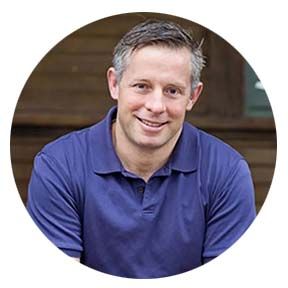 Pete McCall, MS, CSCS, is an ACE Certified Personal Trainer and long-time leader in the fitness industry. He has been featured as an expert in the Washington Post, The New York Times, Los Angeles Times, Runner's World and Self. He holds a master’s degree in exercise science and health promotion, and several advanced certifications and specializations with the National Strength and Conditioning Association and National Academy of Sports Medicine.
Pete McCall, MS, CSCS, is an ACE Certified Personal Trainer and long-time leader in the fitness industry. He has been featured as an expert in the Washington Post, The New York Times, Los Angeles Times, Runner's World and Self. He holds a master’s degree in exercise science and health promotion, and several advanced certifications and specializations with the National Strength and Conditioning Association and National Academy of Sports Medicine.
What are some of the “corporate level” trends you are seeing and where do you think they’re headed? How might they impact the overall fitness industry?
Definitely the growth of finance and private equity in the industry; much of the growth of various franchise operators, like Planet Fitness, Crunch or UFC Gyms, comes from private equity groups investing in gyms because of the subscription model for consistent, monthly revenue. Finance and equity see fitness as a cash flow machine and are moving into the industry to scale various operations. This coincides with a shift toward recognizing the role of fitness and exercise in long-term health, including mental health. Combine that with the power of social media and it’s very easy to be bullish on future growth.
An emerging trend is the role of machine learning/artificial intelligence (AI) in understanding consumer behavior. Health club operators can really dial in on marketing messaging to appeal to specific market segments with personalized messaging for that segment.
Finally, operators are looking to build clubs that are appealing to all age levels with a large focus on group fitness, personal training and recovery programs. All of this adds up to tremendous employment and career opportunities for ACE Certified Professionals over the next decade or longer.
And pickleball! One of the largest growth opportunities for programming is pickleball; even more, combine pickleball with recovery to appeal to the over 40 market, which has a tremendous amount of disposable capital.
Looking forward a year or two, what do you envision to be the future of personal training? And how can trainers position themselves to take advantage of any emerging opportunities? Can you offer two or three practical steps that they can take right now?
Learn how to connect with clients; many people are stuck on computers and devices all day and crave human connection. This will become a bigger issue as machine learning/AI takes over a number of minor jobs and tasks in various organizations.
Personal trainers should understand program design, but more importantly, how to implement behavior-change theory to help coach clients into making lasting behavior changes.
Personal trainers will never be replaced by an app, algorithm or video feed—the business thrives on direct human connection and interaction. Trainers that understand how to connect with clients of all ages, as well as design programs that deliver real results, will be well-suited for growth.
Here are three tips I would share with all ACE Pros:
- Learn sales skills: You have to be able to sell your services to be successful. This is a non-starter: if you can’t sell, you won’t have clients to train. This doesn’t only mean generating revenue, as you also need to be able to “sell” clients on adopting healthy lifestyle habits.
- Learn behavior-change theory: Learn how to engage clients and coach them toward successful behavior change.
- Pick a niche demographic: Trainers who try to provide all services to every type of client don’t have a specialty. It is better to focus on training one type of client and become the expert in serving that client. That approach will lead to solid growth and long-term business.
Are there any other opportunities you foresee emerging in the not-too-distant future that ACE Certified Professionals can start preparing for?
Learn the business of the industry. Is the company you work for a franchise or corporate operated? Do work for a small-business owner? How much revenue do they generate? What role do you play in that success? How do you add value?
It’s one thing to understand how to design exercise programs, but trainers need to understand the entire industry as a whole so they can identify the career path they want to take.
And be proactive. No one is going to just give you an opportunity—you have to knock on doors, send e-mails, make calls and network like crazy to create the opportunities you want in this industry.
Don’t Overlook Underserved Populations
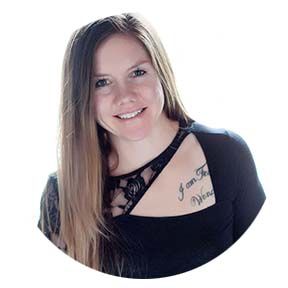 Anna Woods, wife and mom to three, has based her entire career on helping others find their value and worth through fitness, nutrition and the belief that “I am enough.” Woods has a BS in exercise science and marketing and is an ACE Certified Personal Trainer, a Functional Aging Specialist and a CrossFit Level 1 Coach. She is the founder of the sheSTRENGTH Movement and App and is a two-time Finalist for IDEA World Personal Trainer of the Year. Anna focuses on special population training.
Anna Woods, wife and mom to three, has based her entire career on helping others find their value and worth through fitness, nutrition and the belief that “I am enough.” Woods has a BS in exercise science and marketing and is an ACE Certified Personal Trainer, a Functional Aging Specialist and a CrossFit Level 1 Coach. She is the founder of the sheSTRENGTH Movement and App and is a two-time Finalist for IDEA World Personal Trainer of the Year. Anna focuses on special population training.
You’ve written for ACE about working with clients with Down syndrome, autism spectrum disorder, and other cognitive impairments. Where do you think the fitness industry is headed in terms of better serving these individuals and how can ACE Pros prepare themselves to take advantage of those opportunities?
I think ACE Pros need to better prepare themselves for the idea of training clients with special needs for several reasons. As the concept of inclusion in schools and in society continues to grow, parents and caretakers of people with varying diagnoses will find more opportunities to improve the health of their child/client outside of the school and home. In addition, as more people continue to struggle with obesity and the issues connected to obesity and inactivity, exercise and physical activity is an immediate solution that parents will need help and guidance in accessing. Lastly, Special Olympics sports and events continue to grow in popularity and outreach, meaning more people with special needs have options to play sports and do activities that require a certain level of physical ability.
As a result, more trainers will be called upon to help people that have Down syndrome or autism spectrum disorder. This means trainers need to understand the physical, emotional and behavioral strengths and weaknesses of people with these diagnoses. ACE Pros can find educational resources by searching on the Continuing Education page on the ACE website, where you’ll find several special population programs and courses, including the two I’ve produced for ACE: Adaptive Fitness Exercise Programming and Adaptive Fitness for Clients With Special Needs.
Another passion of yours is training young women, particularly athletes. How are things changing when it comes to working with this population and, again, how can ACE Pros position themselves to take advantage of future opportunities? Can you offer two or three practical steps that they can take right now?
Just as people with special needs are finding their voice and place in the gym setting, so are young women. Thanks to the cultural shift of the gym being cool because of brands on TikTok pushing gym wear, fitness influencers, supplements, etc., young women are finding the gym a more acceptable, less intimidating place to be. As a result of more young women in the gym, personal trainers and health coaches can find more opportunities to provide guidance, coaching and encouragement to teach safe lifting, body awareness, and improved confidence and self-image.
Personally, I feel other women can use their voices through social media, which is where most young women get their education, by sharing tips, tricks and personal workout experiences, and set themselves up as an authority in this arena. The more exposure that young women have to an ACE Pro’s “influence,” the more they will gravitate toward learning from that pro. Other ways to gain influence with young women is to connect with local sports teams, clubs and other organizations to provide training sessions, warm-up ideas or just to become a positive fitness influence in kids’ lives in a way that is based on factual, professional knowledge and education.
Are there any other opportunities you foresee emerging in the not-too-distant future that ACE Certified Professionals can start preparing for?
I think the fitness/exercise IQ of athletes is going to continue to increase with the exposure kids have to social media. I also think the expectation that strength and conditioning is a normal part of sports practices, at this point, requires coaches to up their game in this area. As a result, sports coaches will have to continue to grow in their education, knowledge and coaching skills in the fitness arena. I believe coaches will reach out or seek input from personal trainers and exercise professionals to help lead the fitness parts of their sports practices, or at least ask to be educated on ways to improve the athletes’ strength and conditioning related to sports performance. The opportunities that trainers could seize may include providing webinars or seminars on the subject, charging for training sessions with large groups of athletes within practice times, or providing small-group or one-on-one training sessions to improve the kids’ athletic abilities through fitness.
Expand Your Reach With Virtual Spaces
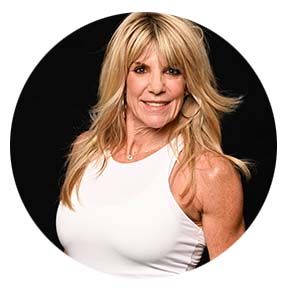 Keli Roberts is an ACE Master Trainer and Continuing Education Provider and is known for her acclaimed workshops worldwide. A Gold ACE Certified Personal Trainer and ACE Certified Group Fitness Instructor, Roberts has created award-winning DVDs, which demonstrate her exceptional teaching skills. Roberts was the recipient of the 2003 IDEA International Fitness Instructor of the Year award, 2003 OBOW ECA award for Best Use of Equipment, 2005 for Best Female Presenter and 2008 Lifetime Achievement Award. In 2007, Roberts was inducted into the National Fitness Hall of Fame, and in 2012, she was awarded Best Female Presenter for Empower Conventions. Additionally, Roberts is a BOSU Developmental Team Member, a Schwinn Master Trainer and an ambassador for allyouneedislove.
Keli Roberts is an ACE Master Trainer and Continuing Education Provider and is known for her acclaimed workshops worldwide. A Gold ACE Certified Personal Trainer and ACE Certified Group Fitness Instructor, Roberts has created award-winning DVDs, which demonstrate her exceptional teaching skills. Roberts was the recipient of the 2003 IDEA International Fitness Instructor of the Year award, 2003 OBOW ECA award for Best Use of Equipment, 2005 for Best Female Presenter and 2008 Lifetime Achievement Award. In 2007, Roberts was inducted into the National Fitness Hall of Fame, and in 2012, she was awarded Best Female Presenter for Empower Conventions. Additionally, Roberts is a BOSU Developmental Team Member, a Schwinn Master Trainer and an ambassador for allyouneedislove.
Looking forward a year or two, what do you envision to be the future of group fitness instruction? And how can instructors position themselves to take advantage of any emerging opportunities? Can you offer two or three practical steps that they can take right now?
Group fitness instruction opportunities are becoming more and more diverse. Whereas before the pandemic, this was mostly limited to gyms and studios. Classes are being delivered in so many different settings, from live big box gyms and small boutique studios to virtual platforms such as YouTube, Instagram, and many, many apps and more. Instructors can take advantage of this by educating themselves to be best prepared. It begins with education. If it involves a specialty, then learn as much as possible. I’ve found that having a few different perspectives is a good idea, so if teaching barre classes is what interests you, for example, then do more than one course. It provides you with a broader view and may even give you more tools to work with.
Are there any other opportunities you foresee emerging in the not-too-distant future that ACE Certified Professionals can start preparing for?
Some of the biggest opportunities I see lie in the virtual spaces, such as Instagram, YouTube and apps. They were with us before the pandemic but grew significantly in the years since. Some instructors have capitalized and grown their communities and built a significant online presence. It seems that the instructors and health coaches who invested the time and money into building strong online brands are doing incredibly well. I think the space is still open to growth, provided the approach is professional, has substance and can create a feeling of community. [The data backs up Keli’s expectations, as the U.S. virtual fitness market is predicted to grow by more than 26% between 2023 and 2030, with group sessions leading the way.]
The Healthcare Industry Needs Your Skills and Knowledge
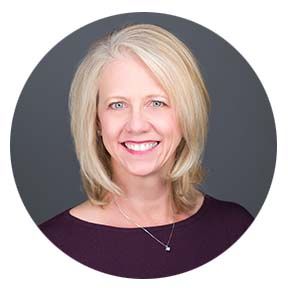 Dominique Hodgin, MA, NE, NBC-HWC, MCHC, is the Vice President of Education—ACE Health and Wellness Division. She is a Nationally Board-Certified Health and Wellness Coach and Master Certified Health Coach. She has been actively coaching since 2008. Hodgin has a master of arts degree in educational psychology from University of Colorado, Denver, a bachelor of science in business administration from University of California, Riverside and a Nutrition Educator Certification from Bauman College Holistic Nutrition and Culinary Arts.
Dominique Hodgin, MA, NE, NBC-HWC, MCHC, is the Vice President of Education—ACE Health and Wellness Division. She is a Nationally Board-Certified Health and Wellness Coach and Master Certified Health Coach. She has been actively coaching since 2008. Hodgin has a master of arts degree in educational psychology from University of Colorado, Denver, a bachelor of science in business administration from University of California, Riverside and a Nutrition Educator Certification from Bauman College Holistic Nutrition and Culinary Arts.
How would you describe the direction of the health coaching industry in terms of offering new services, reaching new audiences and expanding its reach? How can ACE Certified Health Coaches and allied healthcare professionals prepare to be at the forefront of these changes?
The field of health coaching is constantly growing and evolving. Currently, the health coaching industry is experiencing several notable trends, including diversification of services, digital health and an increase in corporate wellness programs.
The industry is expanding beyond traditional coaching and increasingly offering more specialized services in the areas of nutrition, mental health, fitness and stress management. This diversification allows coaches to cater to a broader range of client needs. It is important to stay updated with the latest research and trends in health and wellness through continuous learning. Pursue additional certifications or specializations to broaden your expertise in areas in which clients are seeking support, such as sleep, nutrition, weight loss, mental health, smoking cessation or fitness.
The industry is also leveraging technology to expand its reach. Coaching sessions facilitated via video conferencing, mobile apps or even text-based coaching allow health coaches to connect with their clients in a way that is more convenient, efficient and not geographically bound. Embrace technology and digital tools for coaching in virtual settings. Learn about and adopt health-related apps, platforms or wearable devices that can aid in coaching and tracking client progress.
Corporate wellness programs are a growing opportunity. These programs are aimed to improve the health and well-being of employees, reduce healthcare costs and boost productivity. Companies are still adjusting to the post-pandemic shifts in the workplace, including helping employees manage a remote or hybrid work environment, or adjust to returning to the office. This is in addition to helping employees manage physical, emotional and mental well-being.
Looking forward a year or two, what do you envision to be the future of health coaching? And how can coaches position themselves to take advantage of any emerging opportunities? Can you offer two or three practical steps that they can take right now?
With increasing recognition and acceptance of health coaching from the healthcare industry, more opportunities to be part of an integrated healthcare team will likely become available. An increased demand for health coaches who specialize in the areas of chronic disease, weight loss, aging or mental health will continue to grow over the next couple of years.
Chronic disease is on the rise, with a large percentage of the population suffering from one or more chronic health conditions such as diabetes, hypertension or autoimmune diseases, and overweight or obesity is often a factor. Lifestyle changes, such as improving one’s diet and exercising, can improve the health of these individuals. Specializing in coaching for one or more chronic diseases and/or weight loss can be a niche with a growing demand, as the prevalence of these conditions continues to increase.
By the end of 2023, millions of baby boomers in our country will be between the ages of 59 and 77, with Gen X right behind them hitting the ages between 43 and 58. With an aging population, there will likely be an increased demand for health coaching services tailored to the specific needs of seniors. This can include active aging, managing chronic conditions and addressing age-related wellness concerns. Health coaches who have specialized training in working with the unique needs of the aging population could meet a tremendous need. Healthcare practitioners who work with this population often don’t have the time to provide additional support to these patients and may be more open to bringing in a properly trained health coach to help.
Mental health and wellness are fast becoming relevant and more openly discussed topics. As a health coach, you can support your clients in managing stress, emotional and spiritual well-being, resilience building and making positive lifestyle choices that have a direct impact on brain health and can lead to better mental health. In addition to working in the field of healthcare and with the general population, health coaches with specific training in mental health and wellness may find additional opportunities to work with corporations and employee wellness initiatives.
You can position yourself to take advantage of emerging opportunities by being proactive and adaptable. Here are a few practical steps you can take right now to help set yourself up for success:
- Stay informed. Keep abreast of industry trends, emerging research and changes in healthcare policies.
- Continuously improve your knowledge and skills. Commit to ongoing professional development and education. Consider obtaining additional training in your desired specialty from a qualified and reputable organization. Attend workshops, webinars or conferences whenever possible.
- Obtain an advanced and recognized coaching certification, such as the ACE Health Coach Certification or the Health Coach Certification Masters Course from the Dr. Sears Wellness Institute. This will show you are committed to a higher level of professionalism and strive to offer quality health coaching services.
- Network with healthcare professionals, wellness experts and complimentary service providers. Consider collaborating on projects, workshops or wellness programs that leverage each other’s expertise. You might also want to join professional organizations and associations related to health coaching to network with peers and gain access to resources, training and industry insights.
- Enhance your online presence through a professional website or actively engage on professional social media platforms. Regularly share valuable content related to health and wellness to build your credibility and attract potential clients.
Are there any other opportunities you foresee emerging in the not-too-distant future that ACE Certified Professionals can start preparing for?
In addition to specialized health coaching for chronic conditions, the aging populations and mental health, there are a few emerging areas of health coaching that may be worth exploring.
- Genomic health coaching: As genetic testing becomes more accessible and affordable, health coaches may find opportunities to incorporate genomic data into their coaching practices. Understanding how a client’s genetics influence their health can allow for highly personalized wellness plans.
- Health coaching for pediatric and adolescent populations: Children and teenagers have unique needs, including childhood obesity, mental health issues and a need for learning and implementing healthy lifestyle habits. This can be a challenging population since the parents are the ones who shop and cook. Parents need to be fully supportive and engaged in (and willing to model) the ideas of healthy living.
- Community-based health coaching: Collaborating with community organizations, schools and local healthcare providers to offer health coaching services in underserved or disadvantaged communities can be both rewarding and impactful.
Conclusion
In the ever-evolving fitness and health-coaching industries, staying ahead of the curve is essential for your success as a health and exercise professional. The insights offered by these industry experts highlight the importance of adapting to changing trends and technologies, as well as the power of continuously seeking to expand your knowledge through continued education. As the use of virtual spaces and AI broadens into a wide range of both work and life, your ability to connect with your clients on a personal level will be more important—and valued—than ever.
More than anything, these experts offer a vision of the future of fitness that is filled with much-needed hope, as the opportunities for qualified group fitness instructors, personal trainers and health coaches are growing exponentially, particularly as we collectively seek to open doors for those who too often have been overlooked, excluded or unable to access the essential services you provide. Staying informed, continuously improving skills, obtaining advanced certifications, networking and enhancing your online presence are just of the few of the steps you can take right now—today—to not only advance your career, but also help shape the health and fitness industry of the future.
Expand Your Knowledge
ACE Senior Fitness Specialist Program
A growing population of older adults is seeking to gain strength and vitality while warding off inactivity-related disease and cognitive decline—and you can help them achieve their goals. The NEW & IMPROVED ACE Senior Fitness Specialist Program teaches how to safely and effectively help senior clients maintain vibrancy through health and fitness. You'll discover a holistic approach to both body and brain health, combining rapport-building, behavior change, exercise programming, nutrition and cognitive health. Most older adults are impacted by some type of age-related chronic illness, injury or cognitive decline, so this specialized expertise will help increase your value and client pool.
ACE Youth Fitness Specialist Program
At its core, the ACE Youth Fitness Specialist Program is designed to help you find effective methods to help your young clients enjoy being physically active. By learning how to design, implement and coach fun and engaging exercise programs for youths of all ages, you will get the youngest generation moving, positively affecting them in their adult life and for generations to come.
Size Inclusive Fitness Specialist Program
When it comes to fitness, the larger-bodied demographic has different needs both psychologically and physically. The Size Inclusive Fitness Specialist Program, created by Louise Green, author, educator and award–wining fitness trainer whose expertise has been featured by more than 150 media outlets, offers in-depth, highly specialized training to remove barriers and help get your larger-bodied clients moving in a sustainable way.





 by
by 






